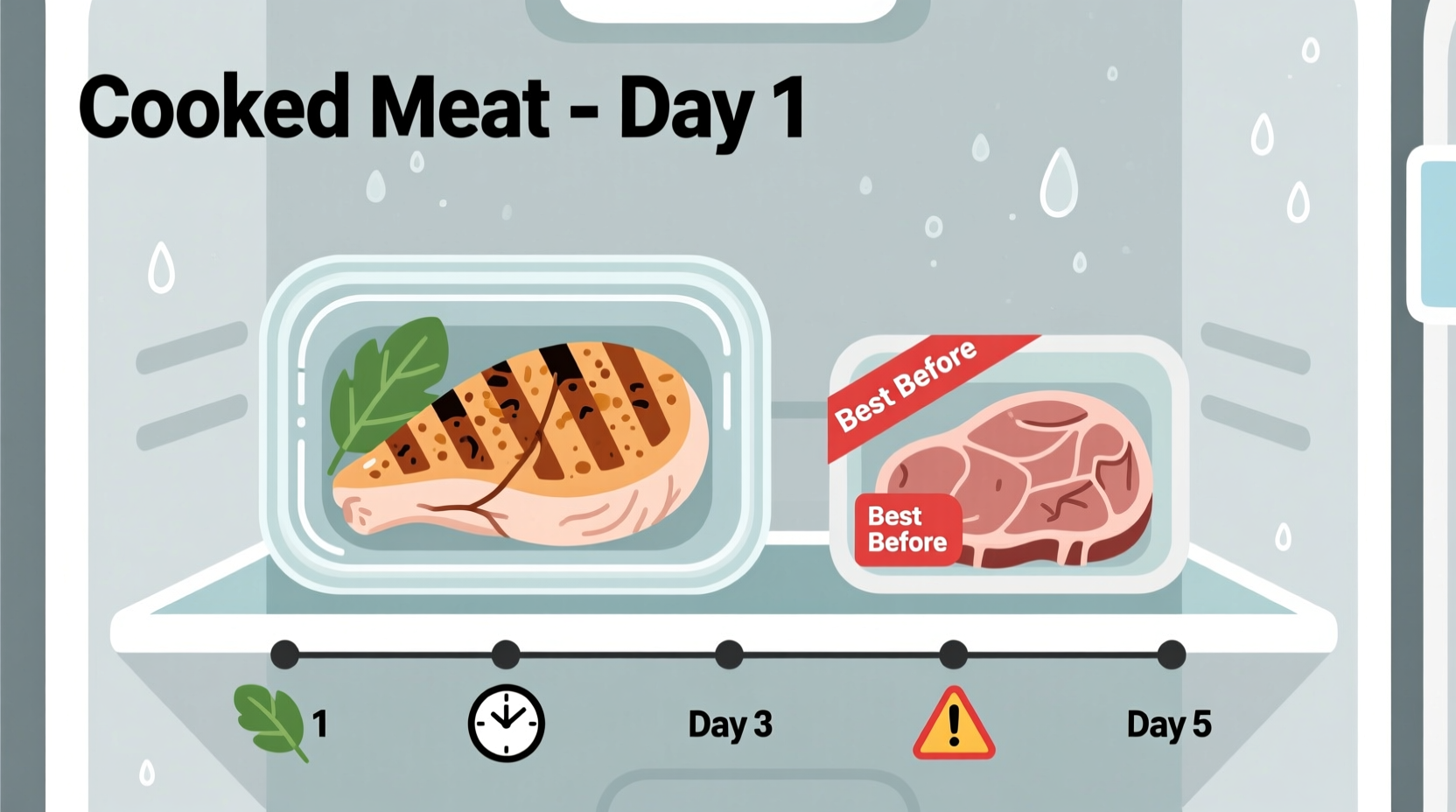Why Proper Cooked Meat Storage Matters
Understanding how long does cooked meat last in fridge isn't just about avoiding waste—it's critical for food safety. Consuming meat past its safe storage window can lead to foodborne illnesses caused by bacteria like Salmonella, Listeria, and Staphylococcus aureus. According to the USDA Food Safety and Inspection Service, improper food storage causes millions of foodborne illness cases annually.
Your Complete Guide to Cooked Meat Refrigeration
Let's break down exactly what you need to know about cooked meat storage time fridge so you can protect your family while minimizing food waste.
Standard Refrigeration Guidelines by Meat Type
| Meat Type | Safe Refrigeration Time | Special Considerations |
|---|---|---|
| Cooked chicken & turkey | 3-4 days | Remove bones before storage to extend freshness |
| Cooked beef, pork, lamb | 3-4 days | Fatty cuts may spoil slightly faster |
| Cooked fish & seafood | 3 days | Shellfish has shorter shelf life than finfish |
| Casseroles with meat | 3-4 days | Egg-based casseroles have shorter shelf life |
| Meat gravy or broth | 2 days | High moisture content accelerates spoilage |
The Science Behind Meat Spoilage
Bacteria growth follows a predictable pattern when cooked meat sits in the "danger zone" between 40°F and 140°F. Within 2 hours at room temperature, bacteria can double in number every 20 minutes. This cooked meat fridge life timeline shows why prompt refrigeration matters:
- 0-2 hours: Safe at room temperature (the "danger window" before refrigeration)
- Day 1-2: Optimal quality and safety
- Day 3: Approaching the upper safety limit for most meats
- Day 4+: High risk of spoilage bacteria and potential pathogens
4 Critical Factors That Affect how long is cooked meat good in the refrigerator
Not all refrigeration scenarios are equal. These context boundaries significantly impact your cooked meat storage duration:
- Refrigerator temperature: Your fridge must maintain 40°F (4°C) or below. Use an appliance thermometer to verify—many home refrigerators run warmer than settings indicate.
- Storage containers: Airtight containers prevent moisture loss and cross-contamination. Glass containers with tight seals outperform plastic containers for maintaining freshness.
- Cooling speed: Divide large portions into shallow containers (no deeper than 2 inches) to cool faster. Never place hot food directly in the refrigerator.
- Initial cooking temperature: Meat cooked to proper internal temperatures (165°F for poultry, 145°F for beef) has fewer surviving bacteria, extending safe storage time.
How to Store Cooked Meat Properly: Step-by-Step
Follow these professional techniques to maximize your safe refrigerator storage for cooked meats:
- Cool rapidly: Spread hot food in shallow containers (max 2-inch depth) to cool within 2 hours
- Portion wisely: Store in meal-sized portions to avoid repeated reheating of the same container
- Seal properly: Use airtight containers with minimal air space (oxygen accelerates spoilage)
- Label everything: Include contents and date using masking tape on containers
- Strategic placement: Store on middle shelf (most consistent temperature), never in door compartments

5 Warning Signs Your Cooked Meat Has Spoiled
Don't rely solely on the calendar for how to prevent food poisoning from cooked meat. Check for these spoilage indicators before consuming:
- Texture changes: Slimy or sticky surface (not to be confused with natural juices)
- Odor development: Sour, rotten, or "off" smells (fresh cooked meat has mild aroma)
- Color shifts: Grayish hue in poultry, greenish tints in beef
- Mold appearance: Any visible mold means immediate disposal (don't just cut it off!)
- Unusual liquid: Excessive, cloudy, or discolored liquid in container
3 Common Mistakes That Shorten cooked beef storage duration
Avoid these refrigerator errors that put your family at risk:
- Leaving food out too long: The "it was only an hour" myth—bacteria multiply rapidly between 40-140°F
- Using improper containers: Takeout containers often don't seal properly, allowing air exposure
- Guessing instead of labeling: "I think this is from Tuesday" isn't safe food handling practice
When in Doubt, Throw It Out: The Golden Rule
The USDA Food Safety and Inspection Service emphasizes: "When you're unsure about a food's safety, err on the side of caution. The cost of food is nothing compared to medical bills from foodborne illness." This principle applies especially to vulnerable populations like children, elderly individuals, and those with compromised immune systems.
Freezing: Your Best Option for Longer Storage
If you won't consume cooked meat within 3-4 days, freezing extends safety significantly:
- Properly frozen cooked meat remains safe indefinitely (quality declines after 2-6 months)
- Vacuum sealing prevents freezer burn better than standard containers
- Thaw frozen cooked meat in refrigerator, not at room temperature
- Never refreeze cooked meat that's been thawed at room temperature











 浙公网安备
33010002000092号
浙公网安备
33010002000092号 浙B2-20120091-4
浙B2-20120091-4